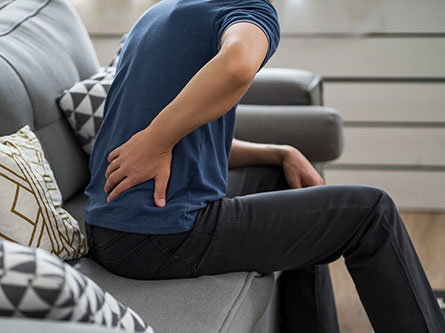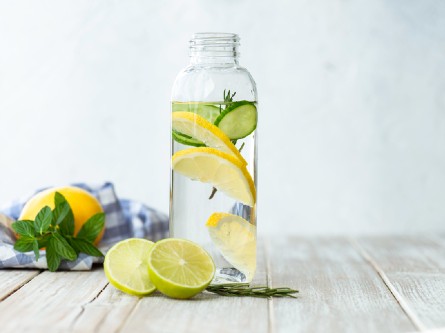
About 500,000 emergency department visits each year are due to kidney stone issues. About 1 in 10 people will have a kidney stone at some point in their lives, according to the National Kidney Foundation. They are most common in men in their 40s and 50s.
Kidney stones are made up of common minerals found in urine. These minerals crystalize and form stones when there is an imbalance. This could mean too much or too little of a certain mineral, or that the concentration of certain minerals is too high.
Some stones can be as small as a grain of sand and pass without a problem. But larger stones can get stuck in the ureter, the tube that connects your kidneys and bladder. These larger stones can block urine flow and can cause severe pain, requiring treatment.
How do you get kidney stones?
Some causes of kidney stones are out of your control (such as genetics). However, the things you eat can play a role in the formation of kidney stones. Other conditions, such as diabetes and gout, can contribute to kidney stones.
Explore the causes and risk factors of kidney stones
Find out about the different types of kidney stones
What foods can cause kidney stones?
Here are some habits and things we eat or drink that can contribute to kidney stones:
- Not enough fluids: Not staying hydrated and drinking enough fluid is probably the biggest risk factor for kidney stones.
- Foods high in salt: Limit canned foods, prepackaged meals and adding sodium to your food. Sodium can raise the levels of calcium in your urine.
- Animal proteins: Too much of all animal proteins, including chicken, beef, pork, or fish can increase your risk of kidney stones. No animal protein is better than any other when it comes to kidney stones.
One common misunderstanding is that eating foods with calcium can contribute to kidney stones. However, it's the exact opposite. Not eating enough foods with calcium actually increases your risk of kidney stones. This is because a low-calcium diet will often lead to too much oxalate in your urine. Oxalate is a mineral found in many foods and commonly found in kidney stones. By eating calcium, you can help lower the oxalate level in your urine.
See some other risk factors for kidney stones
What do kidney stones feel like?
Kidney stones that are just sitting in the kidney often do not cause symptoms. Kidney stones that move to block the ureter, the small tube that drains the kidney, typically cause a lot of pain. The pain is typically felt in the lower back but can also be in the front closer to the groin. Kidney stones can also make it painful to urinate.
Other kidney stones symptoms can include:
- Blood in the urine
- Frequent urination or intense need to urinate
- Nausea and vomiting
Emergency symptom: If you have fever and chills, you need to go to the emergency department.
Learn about common and emergency signs of kidney stones
Explore our Emergency Department and what you need to bring
Can kidney stones be prevented?
You can try and prevent kidney stones. Drinking lots of non-alcoholic fluid, between 8-12 cups, can help prevent kidney stones. Water is the best to drink, but other fluids can help, too. You also want to limit your sodium intake and the amount of animal protein you eat.
Find out what else you can do to prevent kidney stones
How do you get rid of kidney stones?
Treatment for kidney stones depends on the size, type, number and location of the stones. Specialists typically start with the least-invasive procedure. For smaller kidney stones, your provider may give you medications or fluids to help you pass them.
More invasive procedures to help get rid of kidney stones include:
- Shock wave lithotripsy: High-energy shock waves break large stones into smaller pieces. This makes it easier to pass when you urinate.
- Ureteroscopy: A long, thin scope is inserted through your urethra (the tube that takes urine out of your body) and into your bladder and ureter. Specialists remove the stone or use a laser to break it into smaller pieces.
- Percutaneous nephrolithotomy: This is typically for large kidney stones. Your specialist makes a small incision in your back to insert a scope into your kidney. They may remove kidney stones or use a laser to break them into smaller pieces.
See how we've expanded our care for complex kidney stone cases
Learn more about kidney stone treatments
How does UC Davis Health help patients with kidney stone disease?
We offer a quarterly kidney stone clinic where patients can see a urologist, nephrologist and dietitian at the same visit. This creates the best care for our patients by saving them time and coordinating their care. Adult patients are seen in the morning and pediatric patients in the afternoon.
A urologist (a provider who specializes in the urinary tract) and a dietitian specializing in kidney stones see the patient first. Then, if needed, they’ll refer the patient to a nephrologist (a provider who specializes in kidney conditions). This is usually for patients with more than one kidney disease.
Find out how to make an appointment in our Urologic Surgery Department
Learn about our Pediatric Kidney Stone Clinic
This blog was medically reviewed by urologic surgeon Noah Canvasser.




